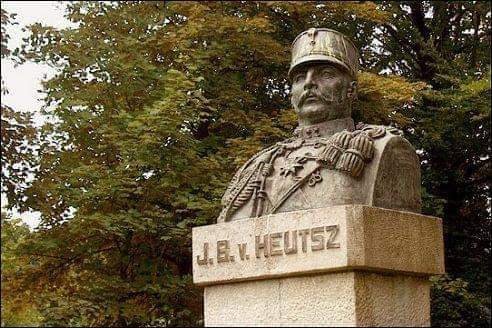MESIN PEMBUNUH RAKYAT ACEH
ABOUT COLONIAL STATUES AND HISTORY
Rakyat Atjeh masih menghargai mesin pembunuh Bangsa Atjeh yang dari Afrika Selatan dari pada KNIL Belanda
Voices are raised that all statues of the former white rulers of South-Africa should be removed, even of those who didn't take part in the oppression of the black population.
How is the situation of statues and monuments from the colonial past in the Netherlands, once the colonizer of South-Africa and the Dutch East Indies (now Indonesia)?
Let's take as an example the monuments and statues of the former commander of the Dutch military forces in the Dutch East Indies (KNIL) and later Supreme Governor of the Dutch East Indies: J. Van Heutsz (1851 - 1924)
The Monument Indië-Nederland (formerly the 'Van Heutsz monument') is located near the Olympiaplein in the southern part of Amsterdam. The monument was originally a badge of honour, meant for General J. B. van Heutsz, who was the commandant of the Royal Netherlands East Indies Army and is also known for bringing Atjeh under Dutch authority. Because of political pressure the name was changed to Monument Indië-Nederland.
On the pedestal used to be a portrait of the general van Heutsz, but because there was a lot of criticism about how van Heutsz had beaten down the rebellion in Atjeh, the portrait was removed and the name of the monument was changed from het van Heutsz monument to het monument Indië-Nederland. After the plaquette with the portrait had been removed, it was stolen in 1984.
Is Van Heutsz in The Netherlands considered as a 'racist' or a war criminal by many left-wing politicians, the opinion of political and military leaders in present-day Atjeh (Aceh) or Indonesia is totally the opposite. By the people of Atjeh he is considered as a worthy and honorable opponent in war and in peace as a Governor as the man who stipulated that the profits of the oil exploration by Shell in Atjeh should mainly go to the people of Atjeh. By Indonesian politicians and the military he is considered as the 'Nation-Builder' of the present-day Indonesia; without his expansionist policies and military operations there would't be an Indonesia within the present borders.
In the seventies a deputation of high ranking officers and politicians from Atjeh visited Amsterdam and wanted to lay flowers at the Van Heutsz monument in Amsterdam. They were shocked about the neglected and even vandalized state in which they found the monument then. They laid some flowers at the statue of General van Heutz at 'Bronbeek' (Old Soldiers Home) near Arnhem instead.
This same statue once stood in the town of Kota-Radja (now: Banda Aceh) in Atjeh and when the Japanese occupied the Province of Atjeh, the population of Atjeh took the statue of Van Heutsz from its pedestal and did hide it from the Japanese army, so they could not destroy it. After the war they returned the statue to the Dutch authorities, who brought it after the independence of Indonesia to the Netherlands and placed it in Bronbeek.
The people of Atjeh do understand very well that he who destroys or takes down statues, actually destroys his own history...